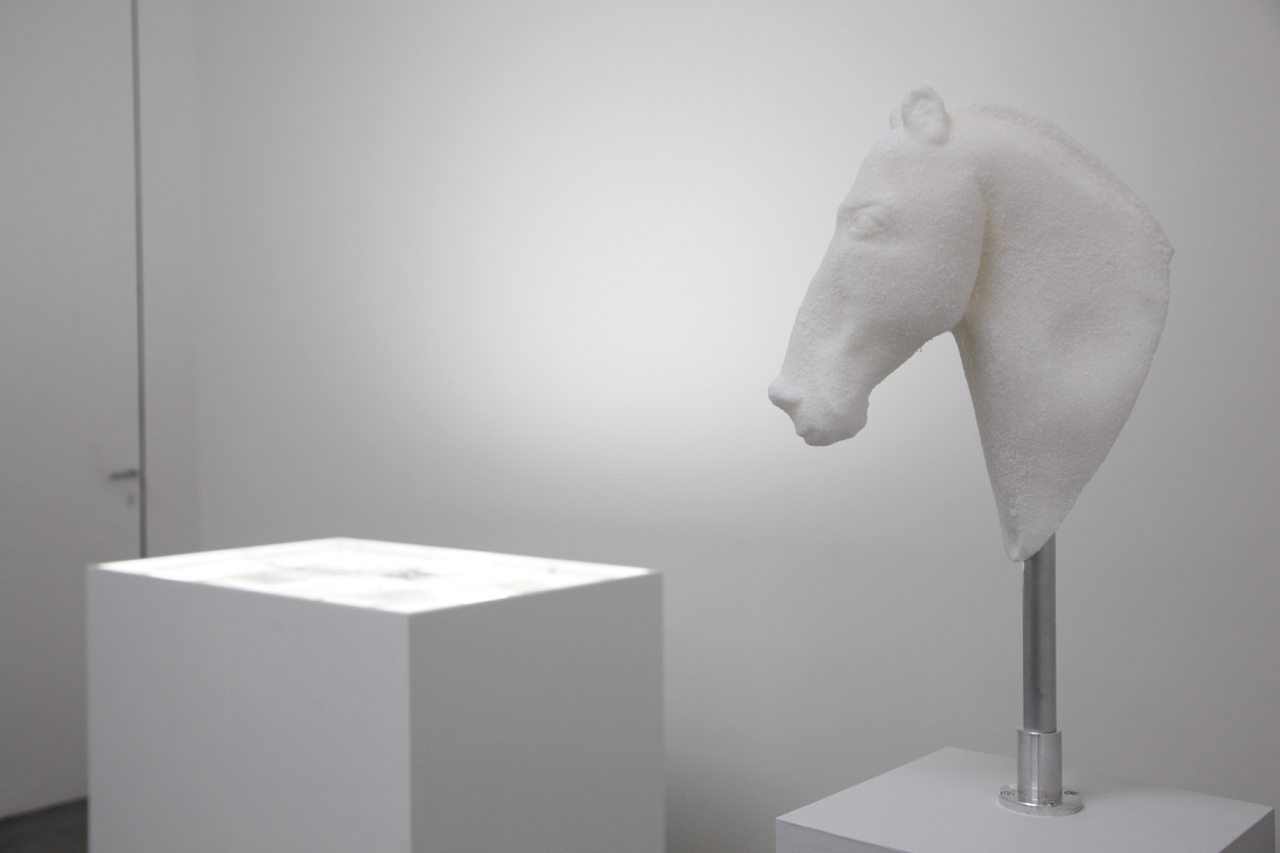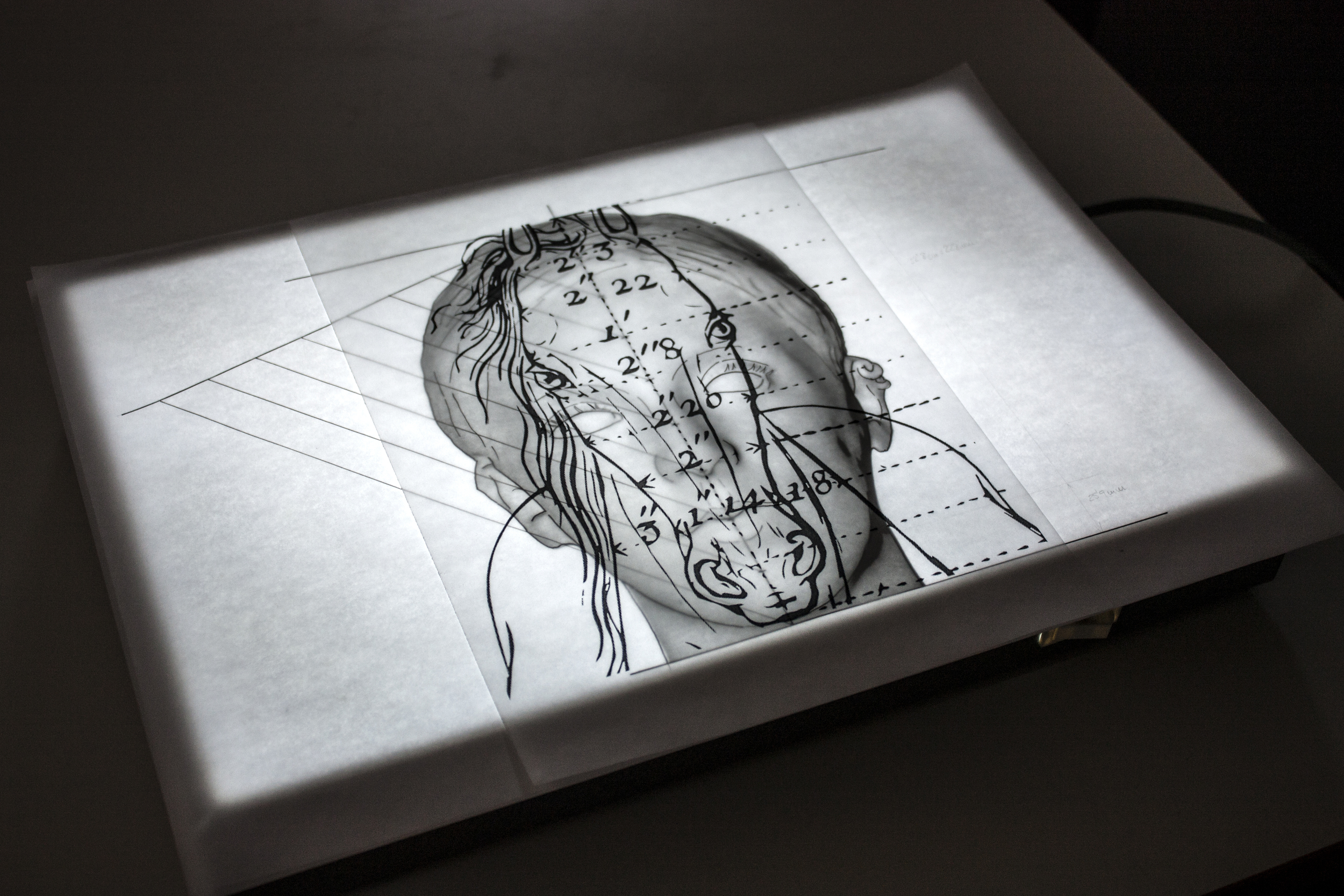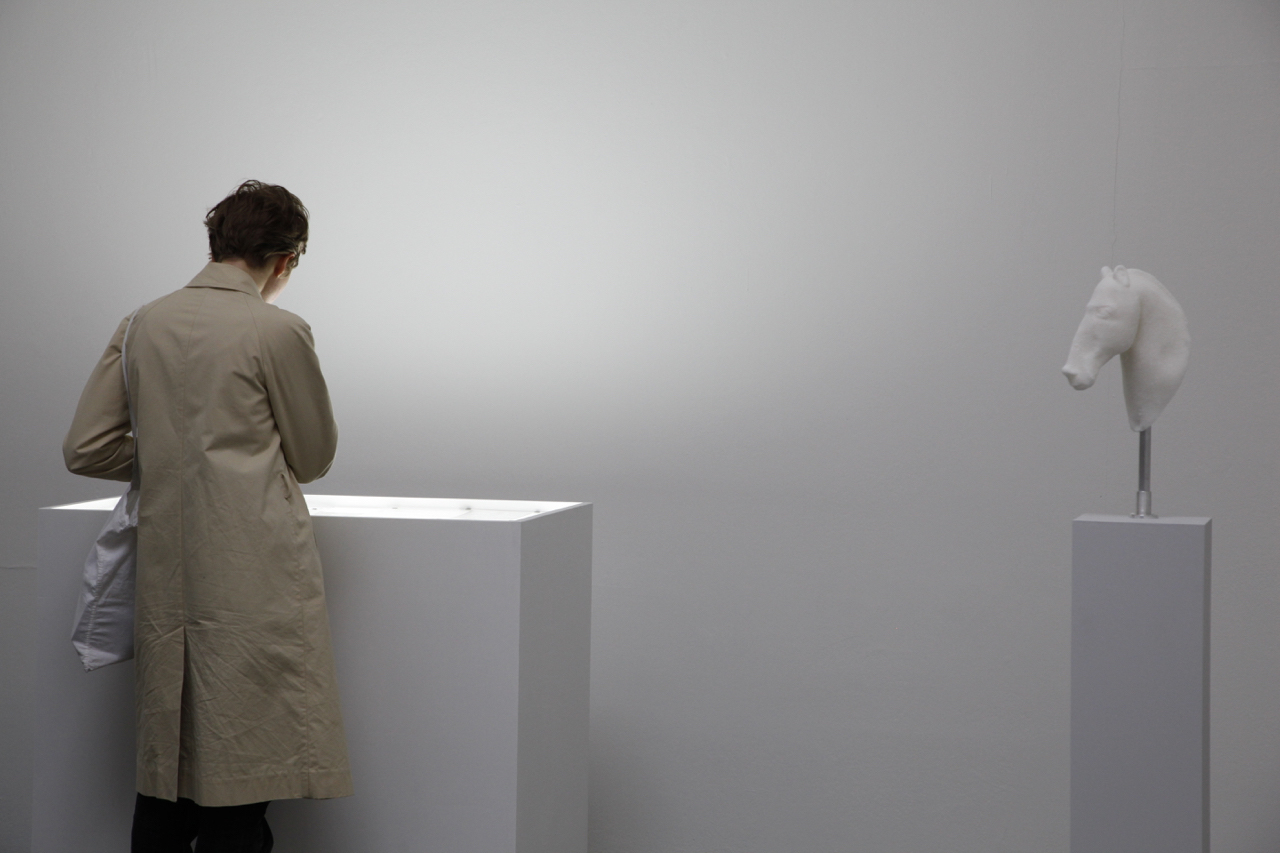











“Caracaballo” deals with the breeding of an “ideal horse” and its social meaning during the 17th and 18th century.
Horse keeping was an integral part in court culture because of its representative function. It was supposed to meet the demands of “high-art” classic baroque equestrianism. These demands were not only related to the choice of different horse based on their constitution, but also on the appearance of these animals, depending on the beauty standards of this period. Funny enough those stardars were also influenced by the couture trends that also shaped the female bodies (corsettes, etc).
In this time, Claude Bourgelat created a system of measurement that every horse should complete in order to be considered perfect. I compare this ideal horses and the measurement system with the canon and beauty ideals associated to feminity. Helping myself with a 3D Scann of my head, I modified it to fulfill Bourgelart ideal.